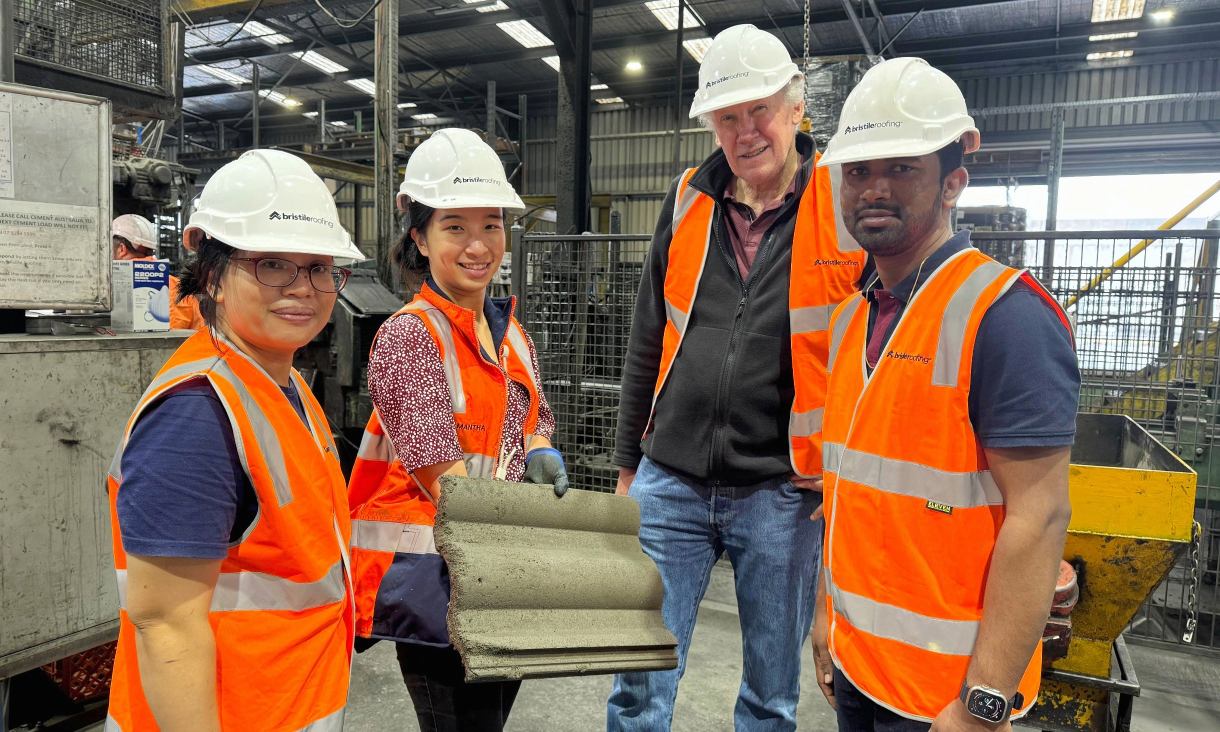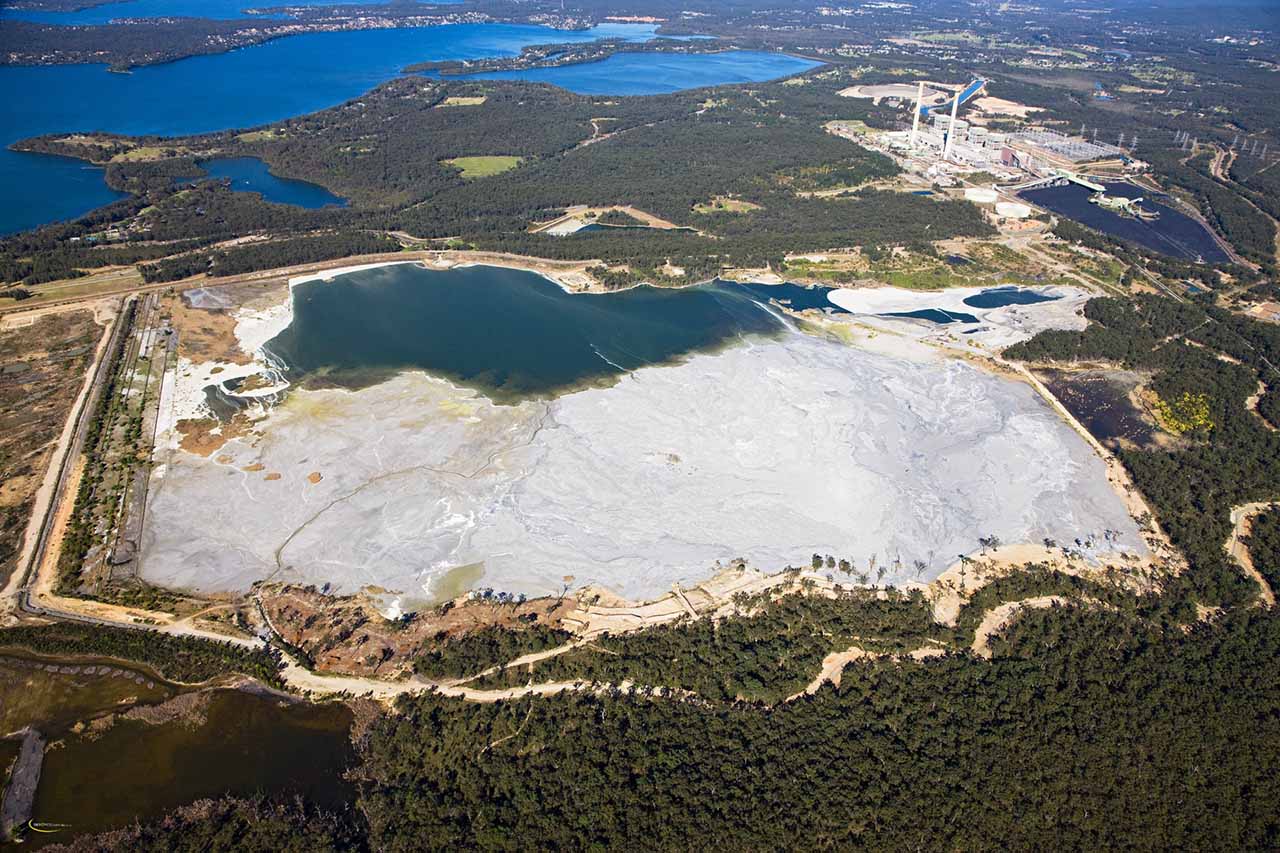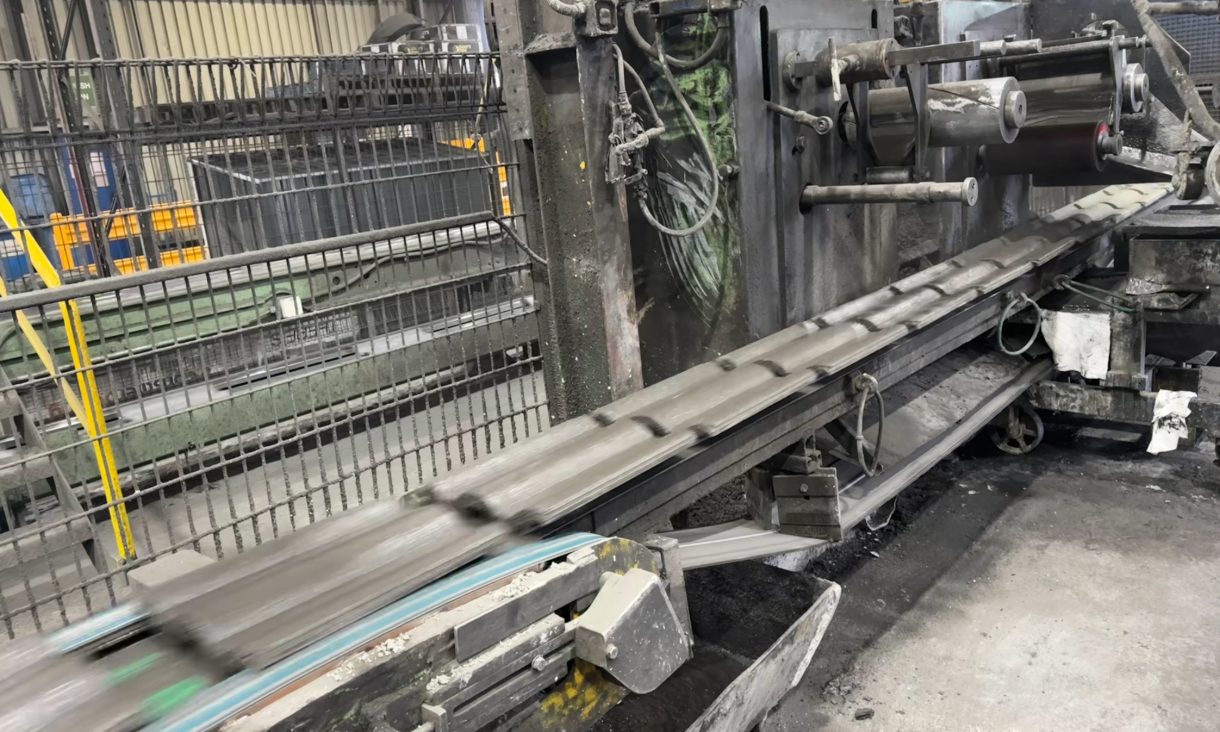A large-scale trial of sustainable roof tiles by RMIT and Bristile Roofing has shown that incorporating coal ash and glass waste can reduce their carbon footprint.
The full-scale manufacturing trials at Bristile Roofing's Melbourne factory produced hundreds of the concrete tiles incorporating ash waste from coal-fired power stations and glass - two challenging waste streams - delivering both environmental and engineering benefits.
The finished product was lighter and more fire resistant, while meeting Australian Standards for strength and durability.

RMIT's Dr Yulin Patrisia, Bristile Roofing's Samantha So, RMIT's Dr David Law and student Madushan Mudiyanselage at the Bristile factory in Dandenong.
A comprehensive circular life cycle assessment of the new tiles, covering the entire process from raw material production through to end-of-life landfilling, demonstrated a 13% reduction in CO₂ emissions compared to conventional concrete tiles.
RMIT project lead, Dr Chamila Gunasekara, said this substantial environmental benefit largely stems from using harvested pond ash and unwashed recycled glass sand, which avoid energy-intensive processing and effectively replace virgin materials.
"By replacing 10% of cement with harvested pond ash and 10% of river sand with unwashed glass waste - a total of 20% virgin material replacement - we not only reduce waste going to landfill but also produce an improved concrete product with enhanced fire resistance, a valuable feature for roofing in Australia's climate," he said.

Study co-authors (l-r) Dr David Law, Dr Yulin Patrisia, Professor Sujeeva Setunge, Professor Kate Nguyen and Dr Chamila Gunasekara.
In Australia alone, approximately 12 million tonnes of coal ash are produced annually from electricity generation, with more than 400 million tonnes of coal ash stored in large settling ponds.
Similarly, over 1.3 million tonnes of glass waste are generated each year, with more than half still ending up in landfills.
RMIT Principal Research Fellow, Dr Yulin Patrisia, said the trial proved we can integrate significant volumes of this industrial waste without compromising quality and safety.
"While harvested waste pond ash is less reactive - primarily due to prolonged storage in settling ponds - it remains an attractive material due to its abundance and contribution to long-term engineering performance," Patrisia said.
"Despite its lower early reactivity, it helps enhance concrete performance over time. Our tests showed better dimensional stability, reduced shrinkage cracking, and continued strength gain - making it ideal for durable, non-structural applications."

More than 400 million tonnes of coal waste pond ash is stored in large settling ponds around Australia.
The product's engineering performance is described in Sustainable Materials and Technologies, while the environmental assessment has been published in The International Journal of Life Cycle Assessment.
Additional collaborations with local councils and commercial partners are now underway to trial the roof tiles in real-world settings.
"This is more than just a lab success," said Gunasekara. "We are ready to scale this for industry."
To achieve this, scaling up will require identifying reliable local waste resources that are consistent in quality, availability, and sufficient volume.

The team produced nearly 300 concrete roof tiles at the Bristile Roofing facility.
Building out impact from roof tiles to bricks
The concrete mix design also has broader applications beyond just roof tiles.
Another of the team's prototypes are concrete bricks using 15% harvested pond ash and 20% unwashed glass sand - totalling 35% waste materials - while satisfying Australian standards for load-bearing structural concrete and fire performance for wall elements.
Analysis found using these waste materials also improves insulation, reducing heat loss by 30% compared to conventional cement bricks.
The engineering performance results were published in Case Studies in Construction Materials, while the whole life cycle assessment (covering processes from raw material production to end-of-life landfilling) - demonstrating an 18% reduction in CO₂ emissions through material substitution and avoided impacts - was reported in The International Journal of Life Cycle Assessment.
The team is progressing to manufacturing trials for the concrete brick product in collaboration with an industry partner.
The ongoing research is being supported by the ARC Industrial Transformation Research Hub for the Transformation of Reclaimed Waste Resources into Engineered Materials and Solutions for a Circular Economy (TREMS).
Under the leadership of RMIT's Professor Sujeeva Setunge, TREMS unites leading scientists and industry professionals from nine Australian universities alongside 36 partners from government, industry, and international sectors to minimise waste and transform reclaimed materials into high-value products for construction and advanced manufacturing.

The research is also supported by Sustainability Victoria's Circular Economy Markets Fund for innovation in sustainable construction and circular resource use.
'Advanced manufacturing of waste-integrated concrete roof tiles: Scaling up to TRL 6' is published in Sustainable Materials and Technologies (DOI: 10.1016/j.susmat.2025.e01461)
'Assessment of waste-integrated concrete products: a cradle-to-cradle perspective' is published in The International Journal of Life Cycle Assessment (DOI: 10.1007/s11367-025-02443-w)
'Optimizing engineering potential in sustainable structural concrete brick utilizing pond ash and unwashed recycled glass sand integration' in published in Case Studies in Construction Materials (DOI: 10.1016/j.cscm.2024.e03816)






